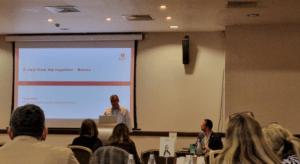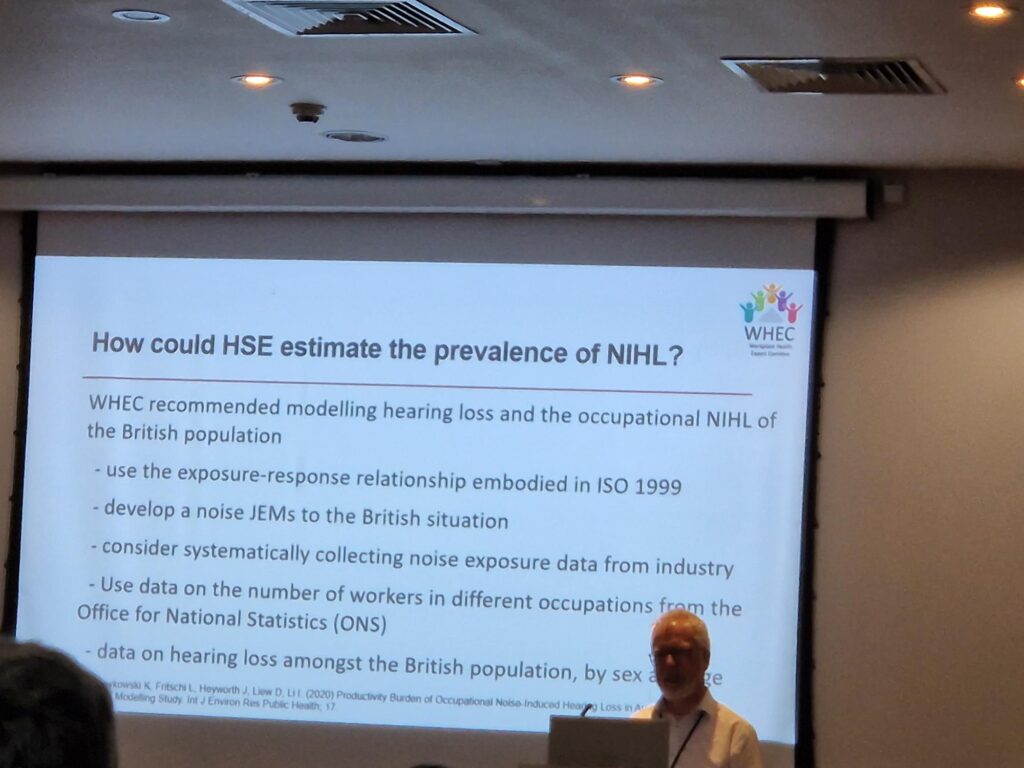The annual UK Hearing Conservation Association (UKHCA) conference, Listen Up!, took place in Sheffield this month, providing an overview of hearing health, risk management and control with noise at work. SHP looks at some of the key takeaways.
Correct advice needs to be provided to duty holders
Chris Steel, Noise and Vibration Specialist Inspector at the Health and Safety Executive (HSE), pointed out key areas for those who survey or assess workplace hearing protection. These included identifying the risks, examining the controls in place and continuing a ‘health surveillance’ afterwards – checking periodically whether the controls in place are working efficiently to prevent and reduce noise-induced hearing loss (NIHL).

Chris Steel speaking at UKHCA
Steel mentioned an area the HSE is looking to focus more on is advice given to workers and duty holders on hearing protection and whether this is correctly provided by the advisors, and if not, the HSE can prosecute the advisor. He added: “If you are doing health inspections…there is an expectation about how that should be done. If you are doing that incorrectly, that is a problem for us.”
He also called for delegates to know the legal limits when assessing risk; including how many workers need to be there for the work, how many are exposed to noise, and for how long. He put an emphasis on checking if workers are exposed to toxins as well when working with noise, as this is often including tasks such as drilling, sawing, or working with compressed air.
Everyone at work needs to understand why there is protection
Steel urged for clear communication between health and safety professionals and the workforce – for workers to understand why signs and measures are in place and to avoid misunderstanding. He added: “We expect you to give employees information, instruction and training on the risks…if you are turning up on-site to do some kind of assessment, the workers need to understand why you are there. That they understand hearing protection, know how to wear hearing protection.
“They understand what controls are in place and why there is health surveillance.
“Health surveillance is so important, it’s the backstop to what we do – are these controls working?”
Although there is an expectation to identify risks and find out which workers will be exposed to noise, the majority of workplace focus, Steel said, should be on control – eliminating or reducing the noise risk. As examples, he mentioned obtaining quieter tools and machinery for reducing the risk to noise exposure.
2.5 billion will be affected by hearing loss by 2050
Stuart Rosen, Professor of Speech and Hearing Sciences at University College London focused on understanding speech in the background of other sounds. He told delegates that hearing impairment is the most common sensory disorder, with the World Health Organization saying that 2.5 billion people in the world will be affected by a form of hearing loss by 2050, and looked for action. He said: “There are no available treatments for deafness and age-related hearing loss nor diagnostic tools for early detection hearing loss.”


